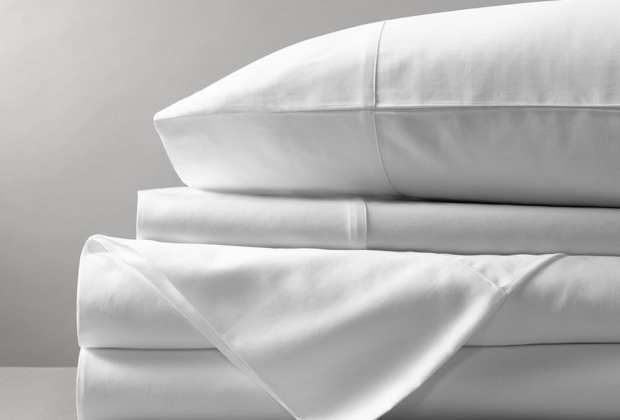The Scaled Future Of Sustainable Luxury Bedsheets

Most people don’t know very much about the sheets they sleep on – or perhaps their knowledge is selective. That is, most people know what brand their sheets are, how soft they are and perhaps even the thread count. But what they don’t know – according to Scott and Missy Tannen, founders of Boll & Branch, a company that specializes in organic, fair-trade cotton bedding – is where their sheets came from.
They were in that same category when they first got their start over six years ago. The couple did not set out to create a direct-to-consumer bedding start-up; at first, they were just trying to find new sheets for their new king-sized bed in their New Jersey home. It should have been an easy process, as there was certainly no lack of options. As the Tannens’ search for high-quality sheets rolled on, they found out that some information simply wasn’t available.
Where did the cotton come from? Were pesticides used in the farming process? Where was the fabric milled? No matter how many times they asked, no matter how high-end the merchant, they found that the origin of cotton sheets is often a weirdly opaque arena.
“We were frustrated that there is no one single person in the supply chain you can get answers from,” Scott Tannen said in an interview. “That’s why we felt compelled to go right to the ground level and build an entire business from the ground up.”
The Tannens suspected they were not the only people seeking a more transparent relationship with their bedding – and they bet on that vision by investing their own savings into founding their organic bedding company. They offer sheets that are designed not just to be comfortable, but also to put the consumer’s mind at ease about their origins. Boll & Branch discloses where the cotton for all its products is farmed and milled. By 2015, they had been certified as the first fair-trade bedsheets brand on the market.
And the market did, in fact, respond to the Tannens’ fair-trade sheets – by 2016, two years into their venture, the firm was profitable.
Some of that, the firm’s founders admit, can be ascribed to luck. Boll & Branch was an early pioneer in the DTC luxury bedsheets market and saw their sales lift as the trend started to really take off shortly after their 2014 launch.
But luck cuts both ways – and with a sudden surge of market interest usually comes a host of entrepreneurial types looking to enter the market. Boll & Branch’s success has inspired its competitors – Parachute, Brooklinen and Snowe all offer their own versions of DTC luxury sheets for consumers, all with their special twist. Affordability, being spun from the air or being the cornerstone of a comfort-based lifestyle seem to be popular promotion paths.
In response to that rapidly filling market, it seems Boll & Branch is rethinking its strategy – particularly when it comes to growth and expansion. The firm announced earlier this week that it has raised $100 million in a strategic investment from L Catterton’s Flagship Buyout Fund. That is a much larger round than they’ve ever – the firm was self-funded by its founders for its first two years, and up until this point, it had only raised a total of $12 million in venture funding.
That, according to Tannen, was intentional. Their goal has always been to build a whole business from the ground up, not something “ultimately designed from day one to be sold” – a path that is often taken by firms that receive large sums of venture money early on.
But now, with nine figures in annual revenue, according to Scott Tannen, Boll & Branch is ready to start thinking bigger. In terms of its footprint, the firm is hoping to expand internationally.
“It’s hard to imagine a country or market in the world that doesn’t make sense for Boll & Branch,” Tannen told a news outlet.
It will also continue expanding the product lineup, though they haven’t offered many specifics other than to hint that there will be “really interesting product introductions” coming in the next few months.
But while its scope and product line are growing, Tannen noted that in some sense, the firm is doing what it always has: trying to answer a single question.
“What does the home goods brand of the future look like?”
